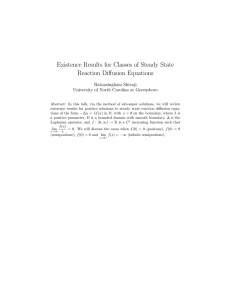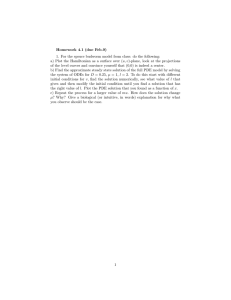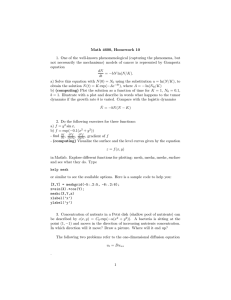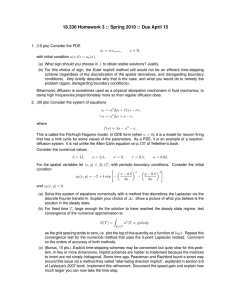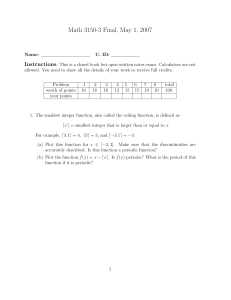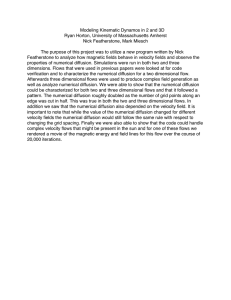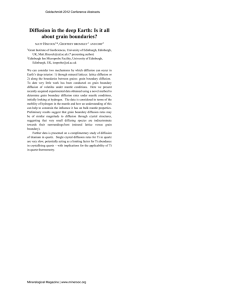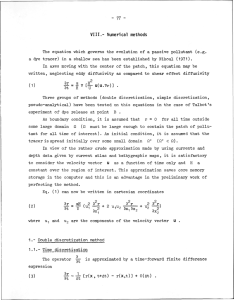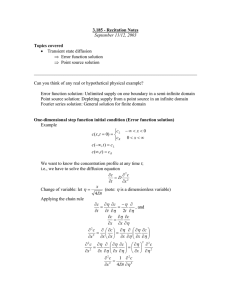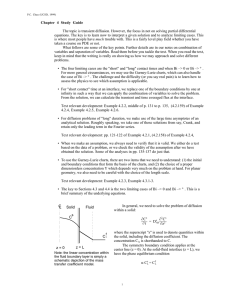Homework 11: Numerical Solution to the Diffusion Equation
advertisement
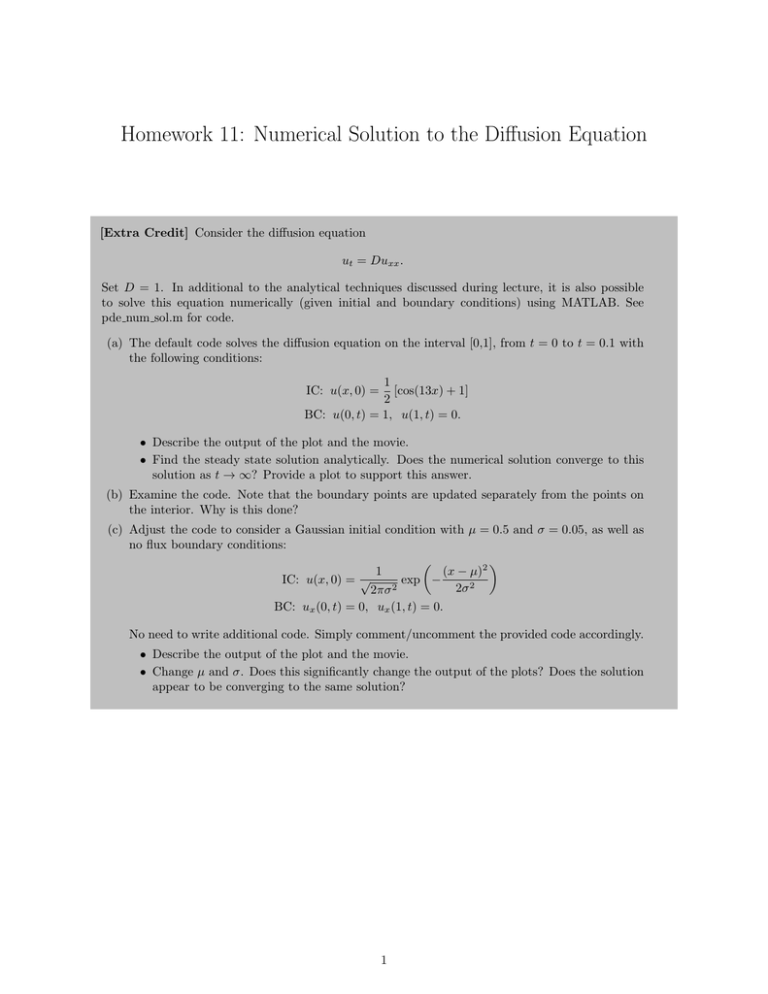
Homework 11: Numerical Solution to the Diffusion Equation [Extra Credit] Consider the diffusion equation ut = Duxx . Set D = 1. In additional to the analytical techniques discussed during lecture, it is also possible to solve this equation numerically (given initial and boundary conditions) using MATLAB. See pde num sol.m for code. (a) The default code solves the diffusion equation on the interval [0,1], from t = 0 to t = 0.1 with the following conditions: 1 [cos(13x) + 1] 2 BC: u(0, t) = 1, u(1, t) = 0. IC: u(x, 0) = • Describe the output of the plot and the movie. • Find the steady state solution analytically. Does the numerical solution converge to this solution as t → ∞? Provide a plot to support this answer. (b) Examine the code. Note that the boundary points are updated separately from the points on the interior. Why is this done? (c) Adjust the code to consider a Gaussian initial condition with µ = 0.5 and σ = 0.05, as well as no flux boundary conditions: 1 (x − µ)2 IC: u(x, 0) = √ exp − 2σ 2 2πσ 2 BC: ux (0, t) = 0, ux (1, t) = 0. No need to write additional code. Simply comment/uncomment the provided code accordingly. • Describe the output of the plot and the movie. • Change µ and σ. Does this significantly change the output of the plots? Does the solution appear to be converging to the same solution? 1
